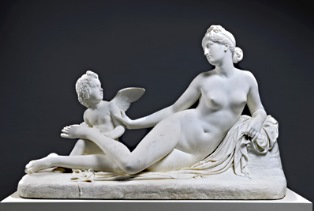
WTI Magazine #25 2014 Apr, 11
Author : Enrico De Iulis Translation by:
If there is a gray area in the common people's attention to the history of art, this is definitely one that covers the artistic production of 1800. If the painting, thanks to the romantic current that led to the testimonies of great historical and literary events on canvas, had a higher reputation especially towards the end of the century, precisely in relation to the unification of Italy, the same fate didn't happen to the architecture, which has been surviving in most cities under our eyes for two hundred years or so, but for the most part has also been ignored by all.
This happens even more to sculpture, which in the popular imagination jumps from Canova to the artists of the group of the twentieth century, and this phenomenon is even more strange because our main or more beautiful squares and our most cured and celebrated gardens always welcome statues and busts created by artists of primary importance, but that the criticism of the twentieth century, overwhelmed by the avant-garde, long ignored or snubbed as academic productions, related to a tradition that is believed to be stale and uncommunicative.
Pietro Tenerani is one of these sculptors forgotten by the general public. Born in Carrara, he moved to Rome in 1814 winning a contest by the Academy of Fine Arts with a work entitled "Agitato dale furie" (Shaken by the furies), and became a pupil of the then famous Bertel Thorvaldsen, in whose workshop he remained for fifteen years. Rome was at the center of the influence of Antonio Canova and fascinated by the icy current and superhuman figures of Thorvaldsen: full neoclassicism.
Despite this training and the immediate success due to the attention of the greatest museums in the world, Tenerani wanted to move away from the stylistic grounds of his eminent predecessors. He was the founder of an anticlassical reaction which wanted to return to the center of the taste of Renaissance sculpture parameters, highlighting not only the anatomical shapes of Michelangelo, but primarily the emotional rendering of the figures. From the wrath to languor, from despair to pride.
This big change will appear especially in his large statues intended for outdoor, while in the small ones for private clients, he will remain faithful to a classical vein, also dictated by the subjects, mainly from mythology.
In 1843 he signed the manifesto of "Purismo nelle arti" (Purism in the arts) written by Antonio Bianchini, finally sanctioning the approaching of the sculpture (by now he was one of the most requested artists) to the Renaissance model, thus actually getting closer to the pictorial world of the Nazarenes, who in Rome had been already active for years.
The further and final turn toward what would later be the Italian realism, sees Tenerani (among the first ones at that time) portraying subjects not naked or in imperial style, but in modern clothes: Simon Bolivar and Pellegrino Rossi are not represented in bombastic classical Roman clothes, but with contemporary outfit and cape, embracing a naturalism so much more consonant with the social facts of the time: this happened, in fact, during the war of independence.
In those years, from 1946 to the annexation of the Papal States to the Italian nation, Tenerani strengthens its reputation and its high artistic profile covering the highest offices of arts facilities in Rome. In 1856 he became president of the Accademia di San Luca; two years later he was appointed in head of the Capitoline Museums; and finally in 1860 he became director of the Vatican Museums. Piero Tenerani was a great innovator, belonging to a generation that few people know.



